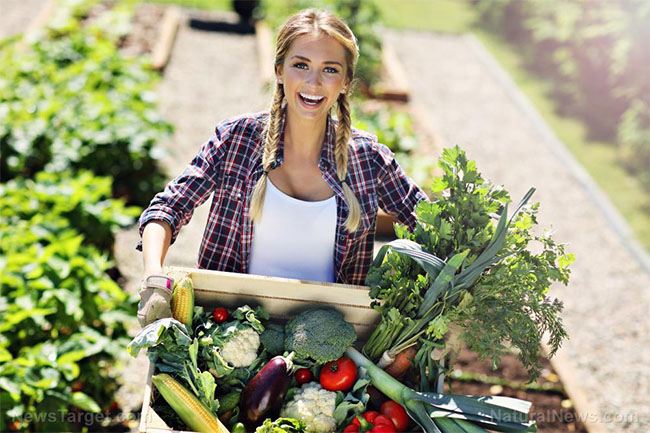05/27/2022 – American physician and biochemist Dr. Robert Malone recommends starting a backyard garden to reclaim self-sufficiency as food crisis looms due to the ongoing war in Ukraine, the lingering Wuhan coronavirus (COVID-19) pandemic and other geopolitical, economic and natural causes.
“People don’t have to be dependent on international agribusinesses, nutritionally valueless food, grain from Russia or Ukraine, food imports from China and other countries, or even be dependent on high priced organics to feed ourselves and our families. Each of us has the power to create our food from scratch,” Dr. Robert Malone, the mRNA inventor, said on his blog.
He cited the war gardens, which was later dubbed as victory gardens and fed millions of people during World War I (WWI), as a proven and tested way to get people through the food crisis.
Charles Lathrop Pack, a philanthropist and conservationist, proposed planting small vegetable gardens to supply local communities with food. The effort would not need the land and manpower used in large-scale agriculture and transportation facilities that were already used during the war. The victory gardens was his brainchild.
In 1917, the National War Garden Commission was organized by Pack, and within that same year the War Garden Campaign was launched. This campaign promoted the use of surplus private and public lands for small vegetable gardens, resulting in over five million gardens, with the value of the produce from these gardens exceeding $1.2 billion by the end of the war.
In the same year, Bureau of Education and the Department of the Interior established the United States Garden Army. By the end of WWI, more food was being produced by these home gardens than farmers had produced in years prior to the war and it continued and expanded during World War II.
“Nearly 20 million gardens were planted in backyards, empty lots and even city rooftops. New York City had the parks and public lawns devoted to victory gardens, as were portions of San Francisco’s Golden Gate Park. In Hyde Park, London, sections of lawn were publicly plowed for plots to publicize the movement. Neighbors and communities, all with the goal of winning the war, formed cooperatives to meet the local needs of fresh produce,” Malone said.
This gave birth to urban gardening. With urbanization and since people would like to do their farming where they are, urban gardening has been the most successful alternative – a shift from the traditional thinking that the cultivation of crops can only be done in the rural areas. (Related: The basics of home gardening and food preservation.)
Many people have given over their windowsills, balconies, patios and rooftops to house both edible and even decorative plants. And no matter what size is available in your area, all you need to know is how to start your urban garden.
Things to consider in starting your garden
Space
There is no such thing as too small of a space. Your area will determine what kind of plants you can grow and the layout that it would require. You would also need to consider the sun and rain exposure of your garden space.
Bed or pots?
You can have a garden bed if space is available, but you’ll need pots if space is an issue. Make sure that you’ll not overcrowd your plants and decide if you’ll have tall and short plants. The more pots you have in an area, the higher the humidity, which will improve plant growth. You may also have hanging pots, trellises and windowsill pots to maximize your space and create visual interest.
Edible or decorative plants?
Your urban garden can be anything you want it to be, so this is the exciting part. The world is really your oyster when it comes to what you choose. However, you may want to consider whether to plant what you have space for or plant food that you actually want to eat.
Drainage
Whatever container you choose for your garden, remember drainage holes are essential. Without proper drainage, soil can become waterlogged and plants may die. The holes need to be large enough to allow excess water to drain out.
Soil quality
A common mistake urban gardeners make is not making sure their soil is good quality. While those made with pesticides promise great results, they are loaded with chemicals. Go for organic soil and grow well from the beginning.
Manual or automatic watering?
There are some pretty advanced watering systems on the market that keep your plants hydrated so you only have to worry about watering a couple times a week (or less). They can be a little pricey, so if you’re looking to cut costs, manual watering is the way to go.
Your urban garden should be an oasis. It’s your chance to develop new skills and just because you live in the city, this doesn’t mean you can’t experience the joy of eating what you grow. Foods.news.



